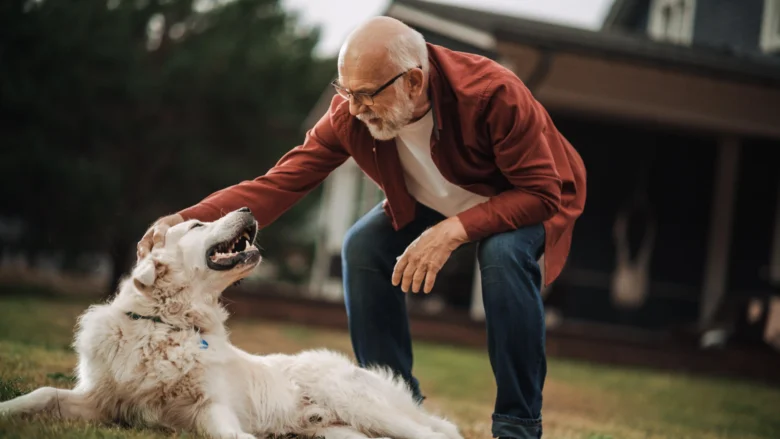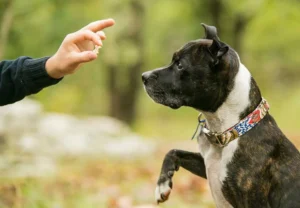Obedience training is an important part of pet ownership and can improve the lives of both owners and pets. To become an expert in pet obedience training, you will need to learn many techniques and choose the ones that best suit your lifestyle and the nature of your pet. In addition to ensuring that your pet follows instructions, good obedience training can also help strengthen the bond between you and your companion animal. This article explores some basic techniques for teaching pet obedience and offers advice on how to use them effectively.
1. Positive Reinforcement
Rewarding your pet for desired behavior is a highly successful training technique called positive reinforcement. This strategy is based on the idea that actions that produce favorable results are more likely to be repeated. Treats, praise, toys, or affection can all serve as rewards. For example, when teaching your dog to sit, you should reward him with treats and show appreciation once he obeys the command. If your pet immediately associates this with a favorable outcome, your pet will be more likely to repeat the activity because of this immediate reward. Timing is one of the most important components of positive reinforcement. To help your pet understand the connection between the desired behavior and the stimulus, you can give the reward immediately after the desired behavior is performed. Another important aspect of implementing this strategy is consistency. To avoid confusion, make sure that everyone in the family understands the rules and incentives.
2. Training
A popular technique called clicker training involves using small devices called clickers to mark the precise moment when a desired behavior is performed. The clicker makes a unique sound to let your pet know when he is acting correctly. The click is rewarded with a treat or a word of thanks. This strategy is very effective because your pet can learn exactly what he is good at by the sound of the clicker. Before you begin clicker training, tell your pet that the reward is associated with the click sound. Once the button is pressed, give your pet a treat. Once your pet knows a reward is coming, use a clicker to cue specific behaviors. For example, click a clicker and reward your dog when he sits at the correct tone. Clicker training helps shape complex behaviors by gradually reinforcing them and breaking them down into smaller, more manageable steps.
3. Continuous Training
A key element of successful pet obedience training is consistency. Dogs especially benefit from routines and clear expectations. When you establish consistent rules, routines, and commands, your pet will be more likely to follow your instructions. Your pet will learn what is expected of him. Use the same command and tone of voice every time you ask your dog to do something (such as sit). To avoid confusing your pet, don’t use different words or actions to give the same command. Enforcing the rules is also consistent. If you want your dog to not jump on furniture, make sure you follow that rule every time. Sending mixed signals can lead to confusion, such as allowing your pet to sit on the couch sometimes but not at other times. Being consistent will make it easier for your pet to understand and follow the guidelines.
4. Positive Reinforcement vs. Negative Reinforcement
Negative reinforcement removes an unpleasant stimulus when a desired behavior is performed, while positive reinforcement rewards the desired behavior. For example, if your dog pulls on the leash, you can use the harness to gently restrain the dog until he walks calmly. Once the dog stops pulling, the pressure is released. Using this technique can teach your pet that calm walks can lead to more comfortable encounters. However, it is crucial to distinguish between punishment and negative reinforcement. Unlike punishment, which adds an unpleasant stimulus to teach a certain behavior, negative reinforcement is designed to eliminate discomfort. Although punishment can cause fear and anxiety in your pet, positive reinforcement is often preferred because it builds trust and strengthens the bond between you and your pet.
5. Training and Availability
For effective obedience training, frequent, short-term training is more necessary than infrequent, long-term training. Because both adult pets and puppies have short attention spans, training should be fun. Practice for five to ten minutes several times a day. Frequent, short sessions can keep your pet interested and prevent him from becoming disinterested or impatient. Focus on one command or behavior at a time during the training session. Teaching your pet one skill before another reinforces the learning process and prevents your pet from becoming overwhelmed. As your pet becomes better at following instructions, gradually increase the difficulty. Over time, regular repetition can reinforce the behavior and improve your pet’s obedience.
6. Socialization
When it comes to obedience training, socialization is crucial, especially for puppies. Your pet will become more confident and adaptable if he is exposed to a variety of people, animals, environments, and experiences. Positive social experiences teach us about the likelihood of behavioral problems such as hostility or fear. Begin your pet’s socialization process early by exposing your pet to new environments in a controlled and appropriate manner. Play with other infected animals, take your pet to new places, and introduce him to sights and sounds. By rewarding calm and curious behavior with treats and praise, you can ensure that these encounters are constructive.
Conclusion
Using strategies that promote learning through patience, consistency, and positive reinforcement is essential to mastering pet obedience training methods. You can teach your pet important commands and habits using techniques such as clicker training, positive reinforcement, and continuous training sessions. To ensure that your pet grows up confident and well-adjusted, socialization is essential. You can enjoy the benefits of a well-trained companion and develop a close bond with your pet with dedication and a positive attitude.
FAQs
1. What is positive reinforcement in pet training?
Rewarding your pet for performing desired behaviors is called positive reinforcement. Treats, praise, toys, or affection can be used as rewards and given immediately when the desired behavior is performed. This technique encourages your pet to perform the behavior again by associating the behavior with a favorable outcome.
2. What is the mechanism of clicker training?
In clicker training, the precise moment when the desired behavior is performed is marked by a small device that makes a distinctive clicking sound. When the pet does something right, a clicker is used to indicate this and then a reward is given. Thanks to sounds, your pet knows exactly which behavior is being rewarded, which makes it easier to train.
3. What makes obedience training consistent?
By being consistent, your pet will understand and meet your expectations. When the same cues, guidance, and practices are used, learning is enhanced and misunderstandings are avoided. All members of the family should use the same training methods and guidelines to give your pet consistent and easy-to-understand instructions.
4. What is the difference between positive and negative reinforcement?
To encourage repetition of desired behaviors, positive reinforcement details praise them. Negative reinforcement helps your pet learn that appropriate behavior will lead to a more comfortable environment by holding an unpleasant stimulus while the desired behavior is being performed. Although negative reinforcement can sometimes cause fear or anxiety, positive reinforcement is often recommended because it promotes trust and improves the bond with your pet.
5. How long should training sessions last?
Training sessions should be short, usually lasting five to ten minutes. Because puppies and other pets have short attention spans, they may benefit more from multiple short sessions throughout the day than from one long session. Regular, short training sessions can keep your pet interested and prevent him from becoming bored or frustrated.



